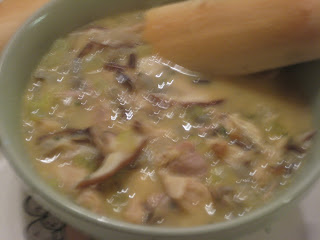They serve up sausage at the Salt Lick Bar-B-Que in Driftwood, TX. The Salt Lick is a place Austin locals take visitors to for a taste of authentic Texas Bar-B-Que. I had a sample on a recent visit with my sister and her husband who retired to Georgetown, TX.
The Salt Lick was packed on the Saturday night when we were there. By the size of their parking lot and by the presence of the Local Sheriff directing traffic into it, packed seems to be the norm rather than the exception. The night we were there, the wait to be seated was more than an hour.
No big deal, the Salt Lick is an event as much as a restaurant. Bring a cooler of beer and wine and enjoy the wait on the large patio outside. During that time, a waitress brought a large platter of Salt Lick sausage for the waiting patrons to sample.
That which in Texas is simply sausage, in Wisconsin has a name – Smoked Polish Kielbasa. At home, I like Bavarian red cabbage, or sauerkraut with my Kielbasa. In an epiphany I saw my Bavarian cabbage beautifully wed on a plate to bar-b-que ribs or brisket.
The bar-b-qued ribs and brisket at the Salt Lick were excellent, better than I can make at home. They were served with a disappointing run of the mill coleslaw and a mindless potato salad. Had they been served with my Bavarian red cabbage the meal would have been raised to very lofty heights.
Whether this recipe truly Bavarian or not, I don’t know. It’s inspired by the fine German restaurants in the Milwaukee area, of which once there were many but now are only a few. In those restaurants this mildly sweet-sour cabbage was served with roast duck, sauerbraten and the like. When serving duck or sauerbraten at home, I always serve red cabbage with it.
But my Bavarian red cabbage, at heart, is a comfort food. It’s the main dish to be served with a few thick slices of Kielbasa or corn beef, some slices of hearty rye bread such as pumpernickel and a good dark beer. With duck this recipe will serve four, with a few thick slices of Kielbasa it serves two.
The most important ingredient in this recipe is not explicitly listed. It’s the bacon fat. It’s used to thicken the liquid the cabbage is boiled in into a velvety sauce. While the food Nazi’s would have us believe bacon fat is poison. In moderation all things are good. And bacon fat is one of the many edible oils our peasant grandparents and great-grandparents took full advantage of. Goose grease, tallow and lard are all in their place proper, good and necessary.
A gingersnap made with goose grease or duck fat is out of this world delicious. I know because that’s how mom made them. If make with bacon fat on the other hand, they would be kind of funky. I know this from mistaking the liquid smoke for vanilla in whipping up a batch of chocolate chip cookies once. But I digress.
Bavarian Red Cabbage:
½ Head Red Cabbage Coarsely Chopped (1 inch x 1 Inch)
1 Apple Cored, Pealed and Chopped
1 Onion Coarsely Chopped
3 Slices of Bacon ½ Inch Dice
Balsamic Vinegar
Water
2 TBS Flower
1 tsp Caraway Seed
Combine the red cabbage, onion, apple and caraway seed in a pot and cover with a ½ and ½ mix of water and vinegar. Fry the bacon and when crisp add it to the pot with a slotted spoon to drain excess fat back into the fry pan. Deglaze the fry pan with vinegar and water then whisk in flour to make roux.
Bring the cabbage to a boil, adding water or vinegar as needed and to adjust the taste. When the apples have softened almost to mush drain of any excess liquid (it should not quite cover the cabbage), return to a boil and slowly add the bacon fat roux to thicken the remaining liquid into a sauce.
Then, and this is important, eat hearty and enjoy.
